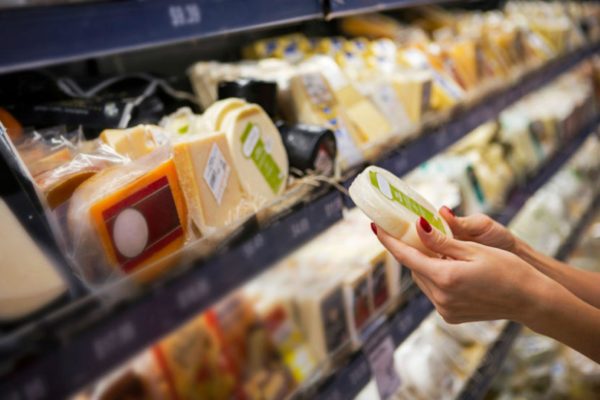Toilet paper, canned food, pantry staples, cleaning products — so many grocery items have been in short supply since the coronavirus crisis began. Everyone knows that part of the problem is consumer hoarding. What is less appreciated is that overpurchasing is going on at multiple levels in the supply chain of buyers and suppliers, beginning with the consumer, continuing with wholesalers and distributors, and so on all the way to the producers.
This is known as the bullwhip effect. Overordering begins with consumer hoarding increasing purchasing at retailers such as supermarkets. The retailers see that their shelves are empty and begin overordering from wholesalers. Retailers overorder even more than their customers overbought, becoming hoarders themselves to avoid running short on the inventories they forecast will be needed to meet increased consumer purchasing.
For the same reasons, wholesalers begin spiking orders even more than is needed to meet the retailers’ increased purchases, and so it goes — the spike in orders becoming higher and higher all the way up the supply chain. The resulting bullwhip effect is present even in normal times, but during crisis like we are seeing now, it creates massive shortages up and down the supply chain. As awareness of these shortages grows, that leads to even more consumer hoarding, causing the bullwhip effect to feed on itself in a vicious cycle.
The recent trend toward “value packs” of consumer products has only made hoarding worse. Particularly bad are paper products like toilet paper, which are most often found on the shelves in supermarkets in packages of 24 rolls or more. If a customer simply wants to buy an extra four or five rolls to feel comfortable about not running out during the next couple of weeks, they can’t. They have to buy a value-pack of 24, 36, or 40 rolls to satisfy their desire to hoard. So, toilet paper disappears even faster than it would otherwise.
Eventually, the bullwhip effect will end in a crash. Consumers have filled their houses with nonperishable products like paper towels and baked beans. But when the crisis passes, they will no longer feel the need to hoard. They will look around the house and realize that they have enough dried pasta to last until Christmas or beyond.
At that point, everyone stops buying, and consumer demand drops. Supermarkets see they have literally tons of food and other products on their shelves and cut their ordering to distributors as quickly as possible. Then distributors cut their orders in reaction and so on.
Finally, factories that had been producing overtime for weeks now find that they may have to idle much of their capacity, perhaps even needing to lay off workers.
How do we break the bullwhip effect? One way is to slow down overreaction, or as a colleague put it, “Everybody just chill.” But how? Supermarkets are beginning to adopt a policy of limiting the number of purchases. For example, my local grocery now allows the purchase of only two dozen eggs per visit and no more. This is rationing.
Rationing has a bad reputation, because usually it comes into play when there is a production shortage, like with gasoline in the 1970s. When that is the case, there simply is not enough product to go around, so limiting what people buy has no useful effect. It just creates longer lines without solving the underlying problem.
This is different. With the COVID-19 crisis, the production capacity for food has not shrunk. In this case, rationing purchasing back to normal levels means that when consumers go to the market, they may be able to buy only two dozen eggs, but they’ll see many more eggs on the shelf. So they worry less about running out, which leads to less hoarding. Thus, spikes in the supermarket’s orders to the wholesalers lessen, and the bullwhip effect is reduced all the way up the supply chain.
So, unlike its bad reputation, rationing during the crisis does not make things worse, but “chills” the supply chain, actually making at least one part of the current crisis better.
Edward G. Anderson Jr. is the Mr. & Mrs. William F. Wright Centennial Professor for Management of Innovative Technology in the McCombs School of Business at The University of Texas at Austin.
A version of this op-ed appeared in the Dallas Morning News.




